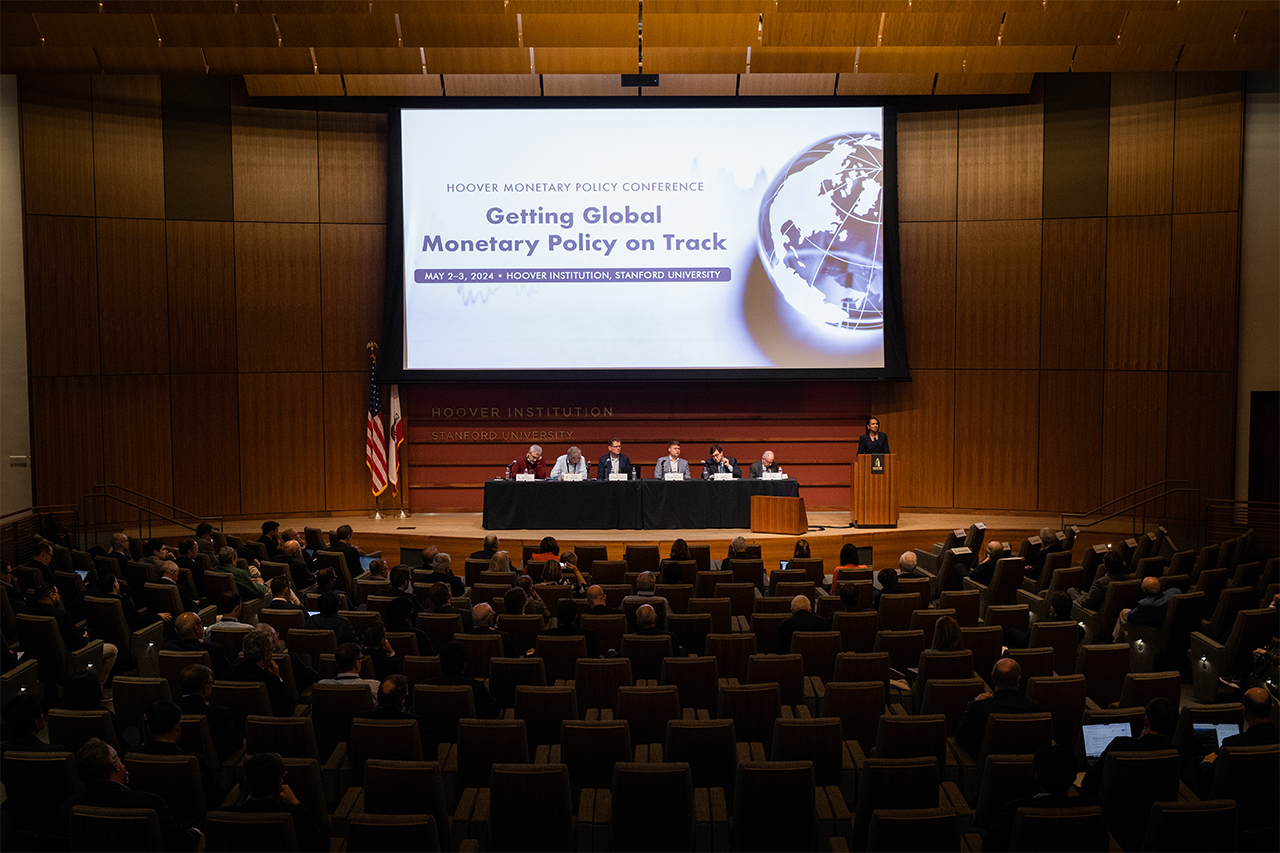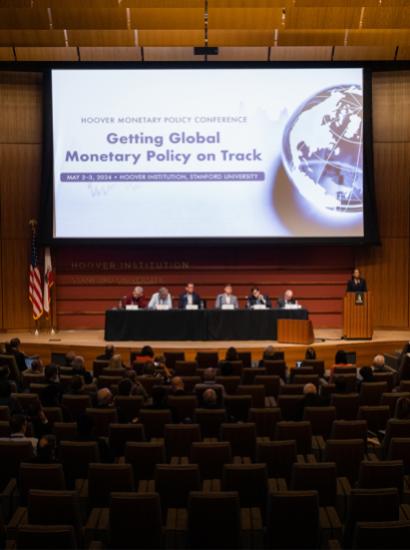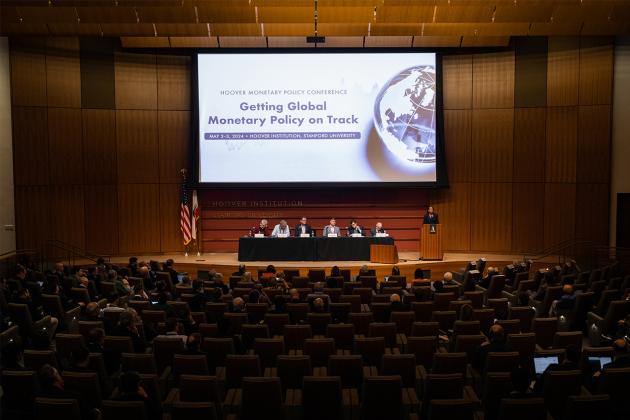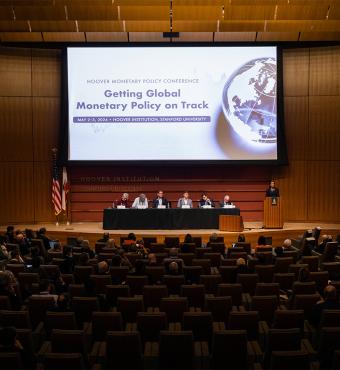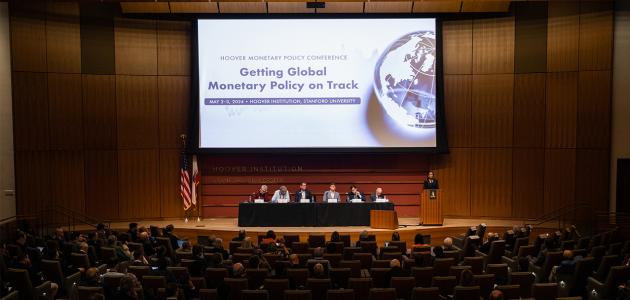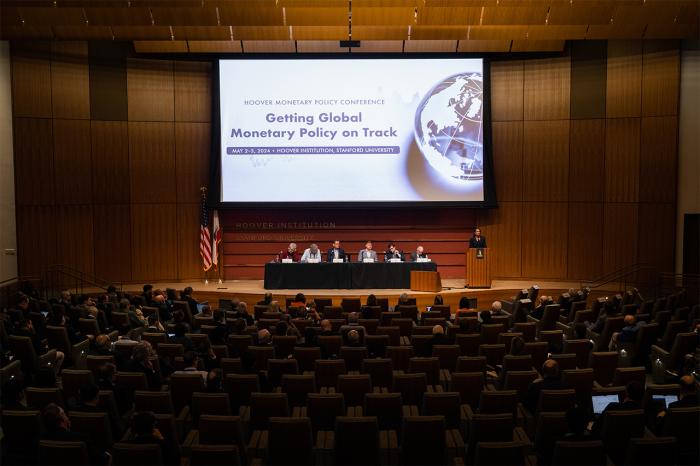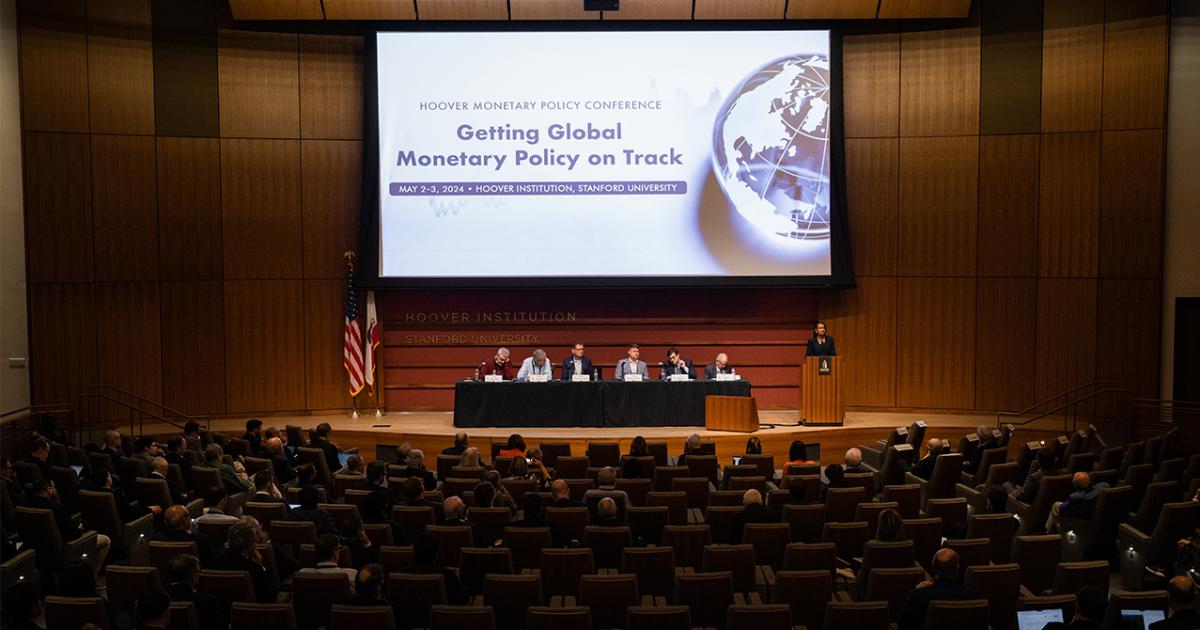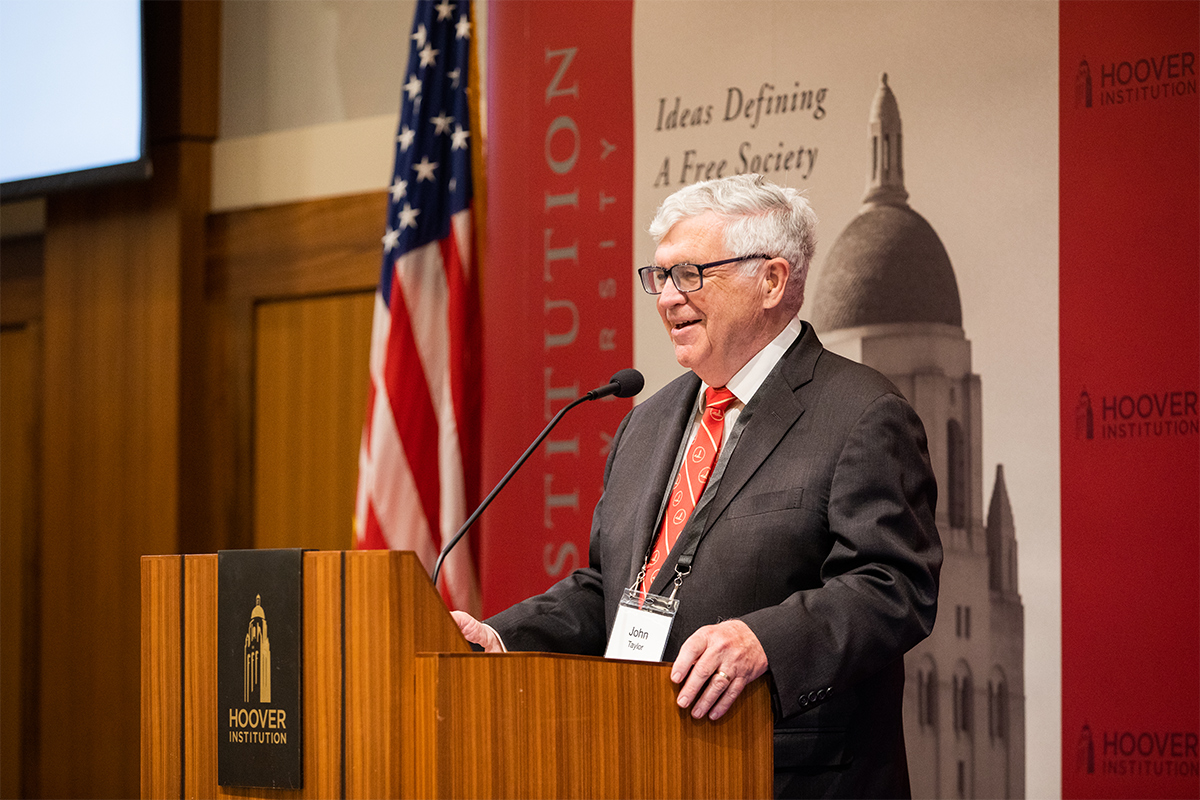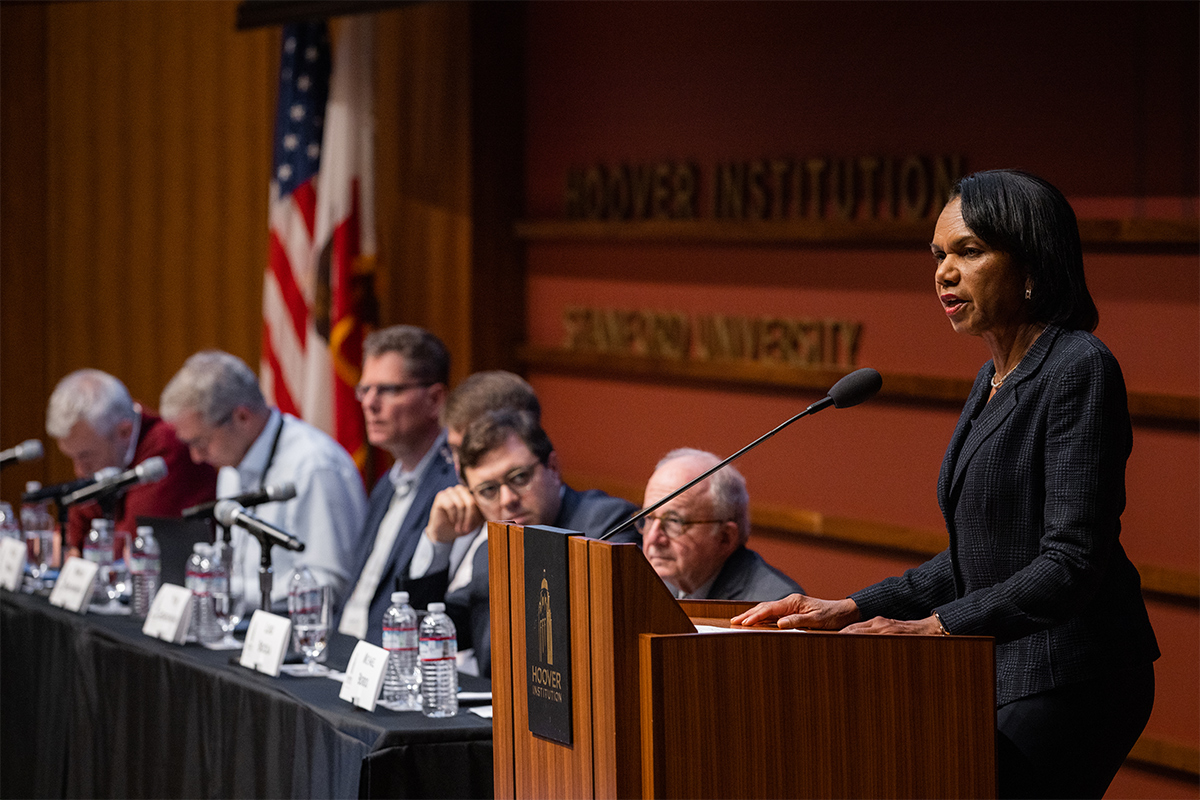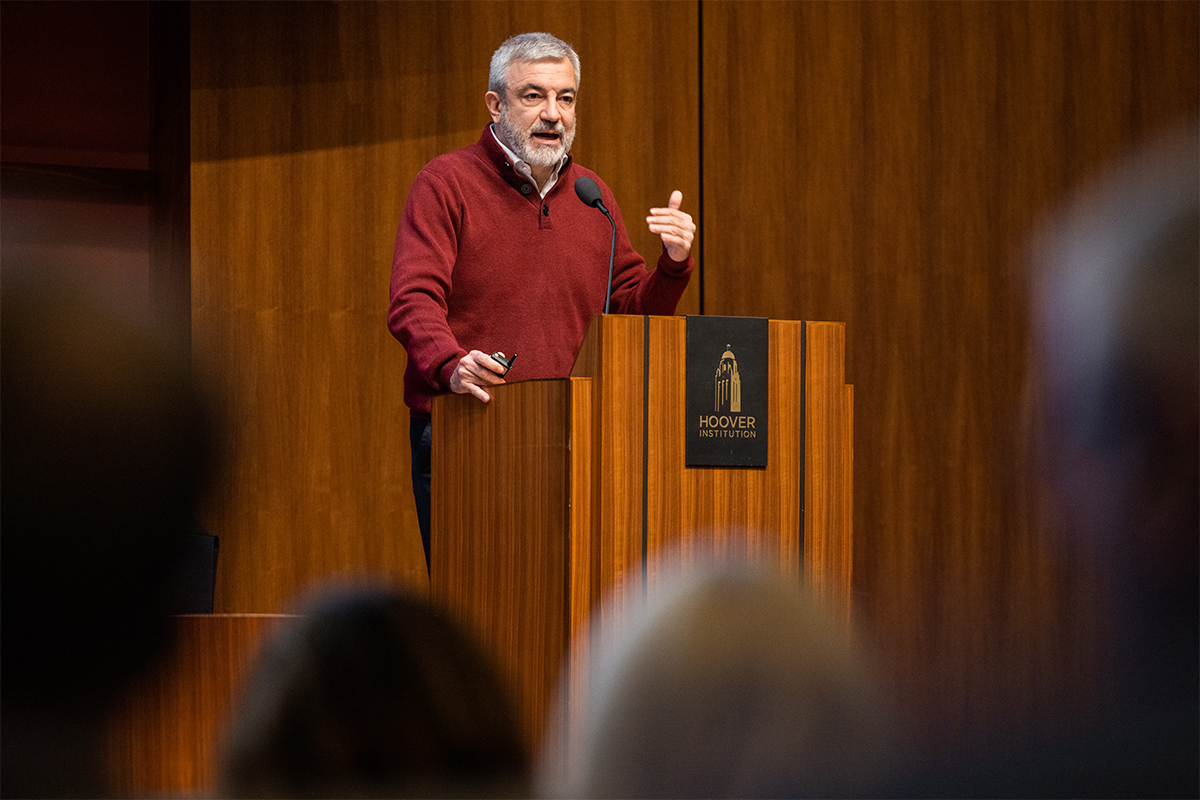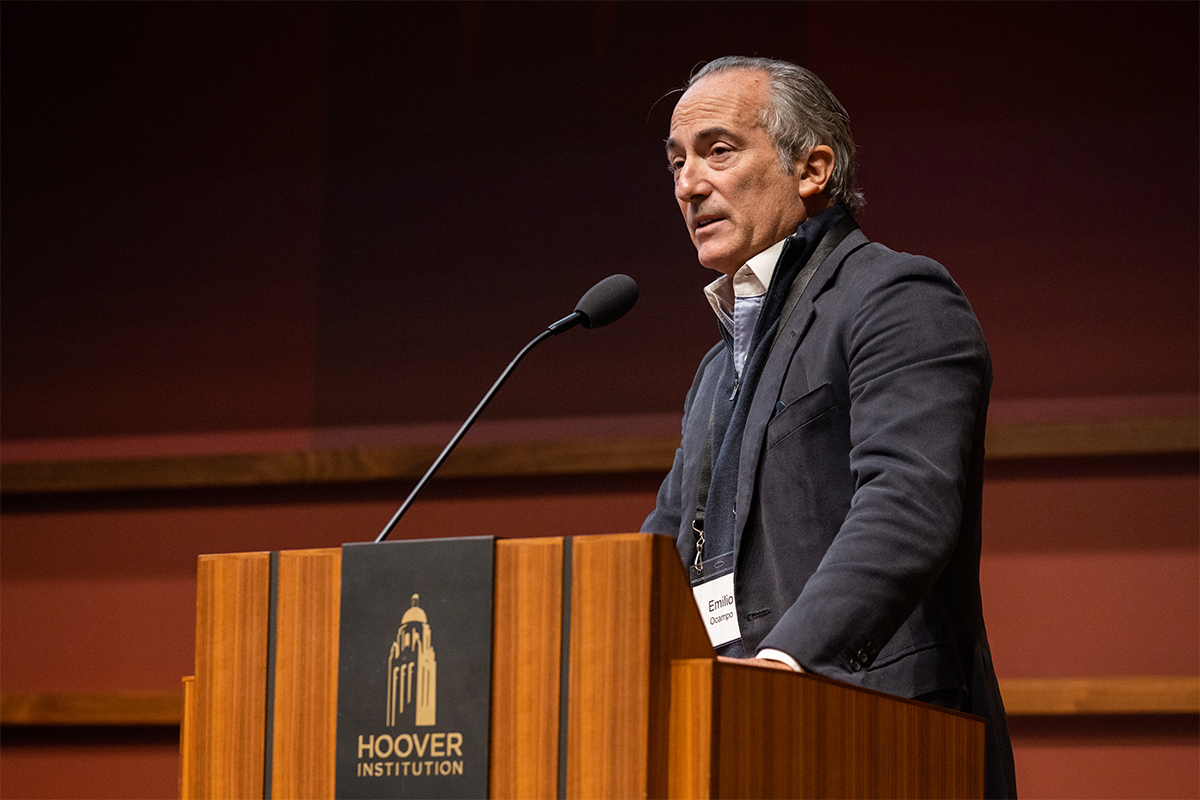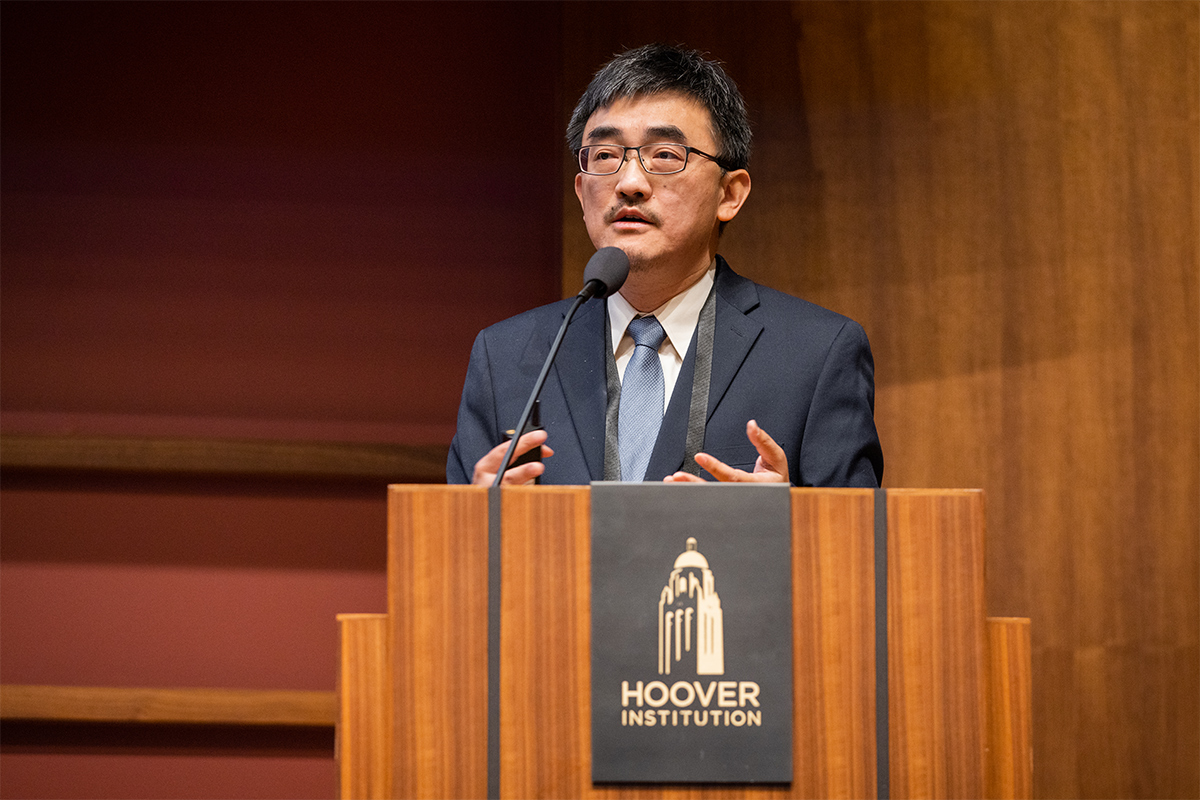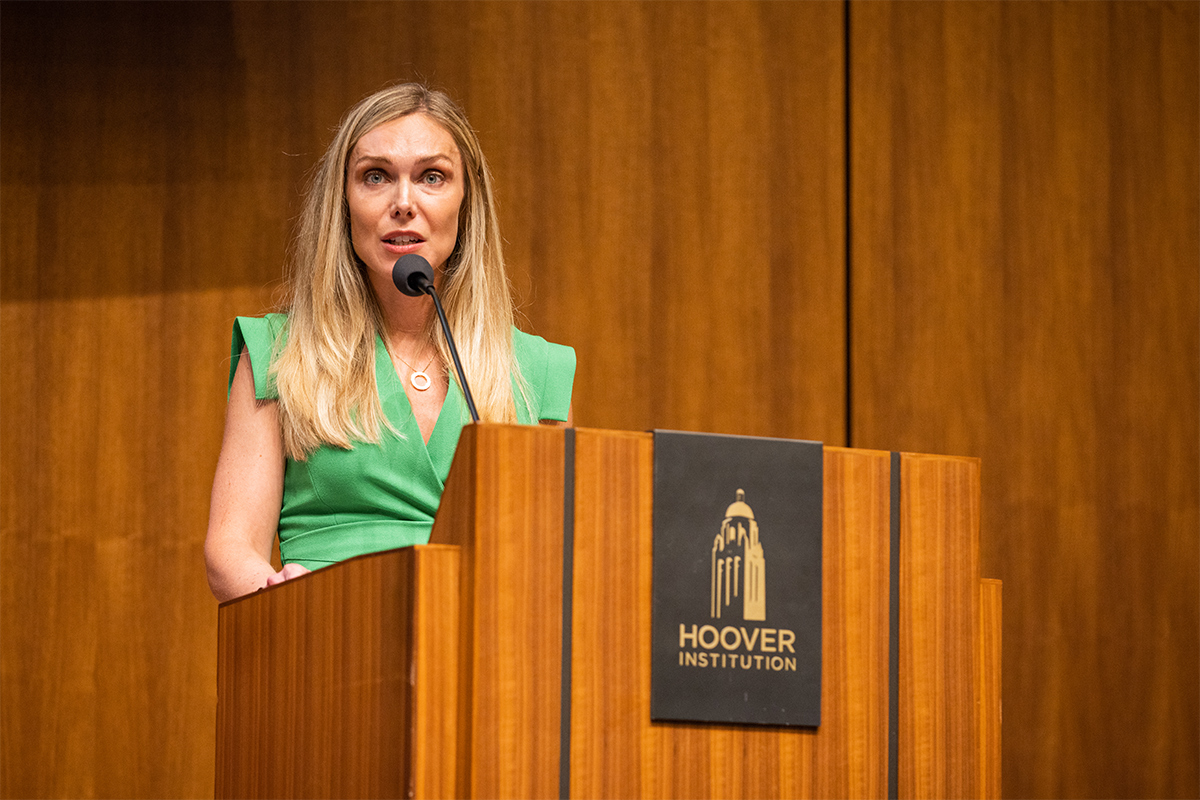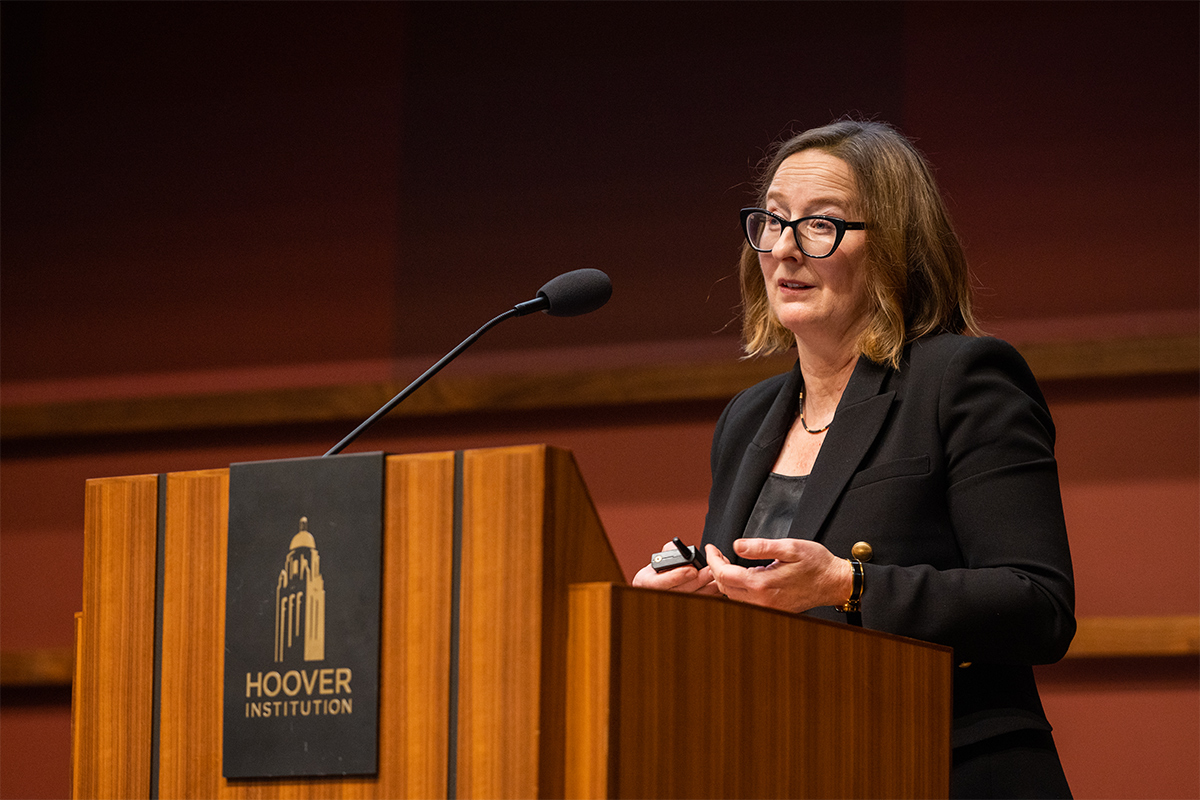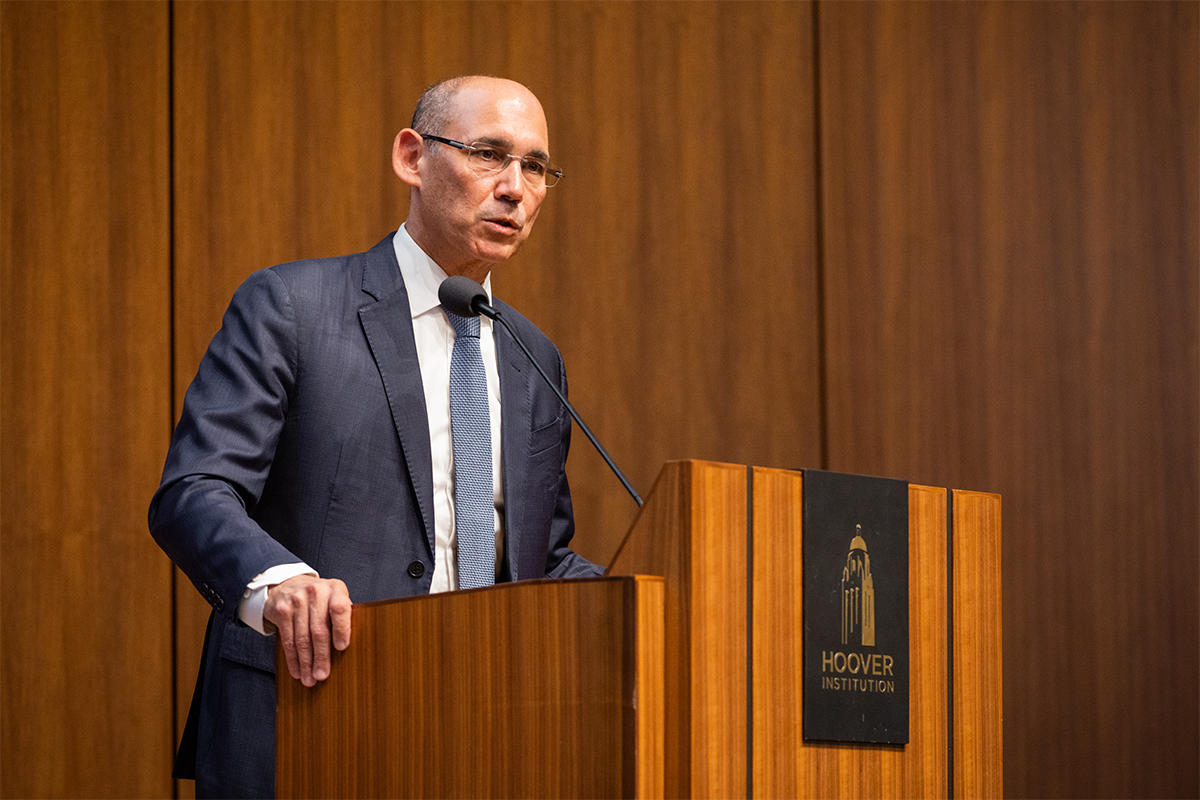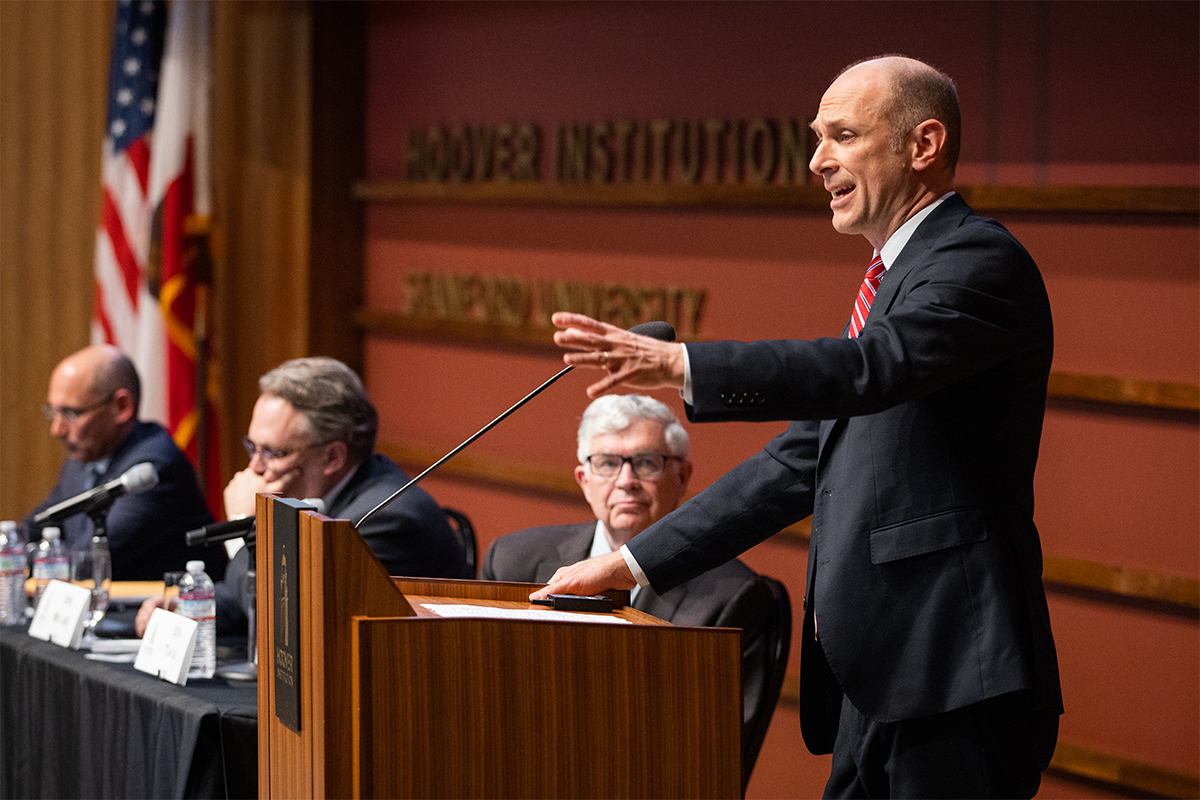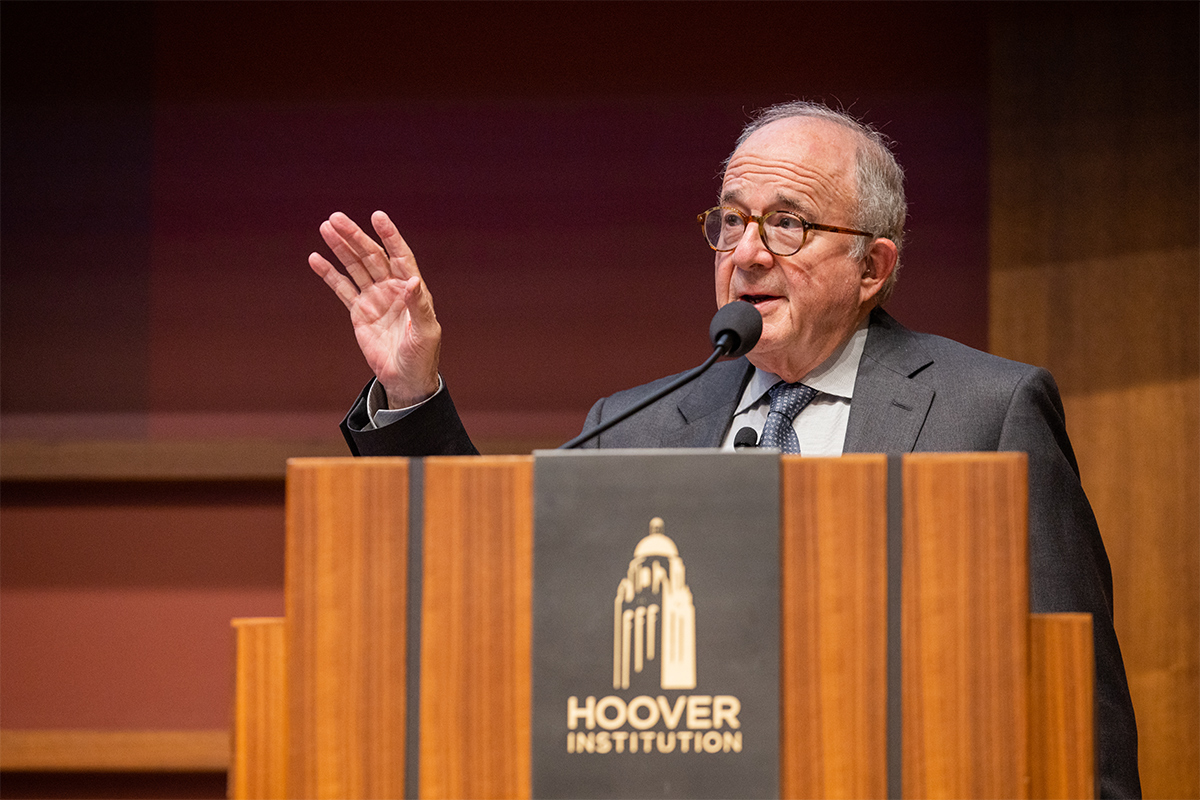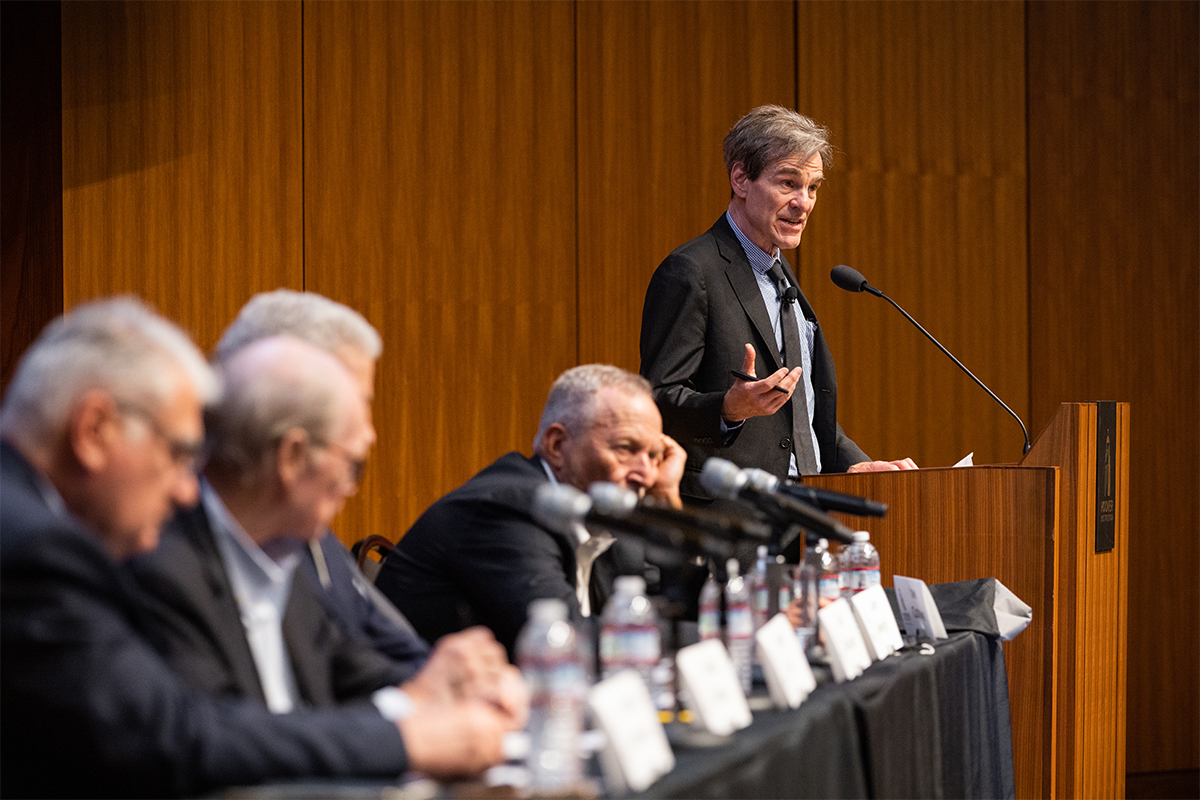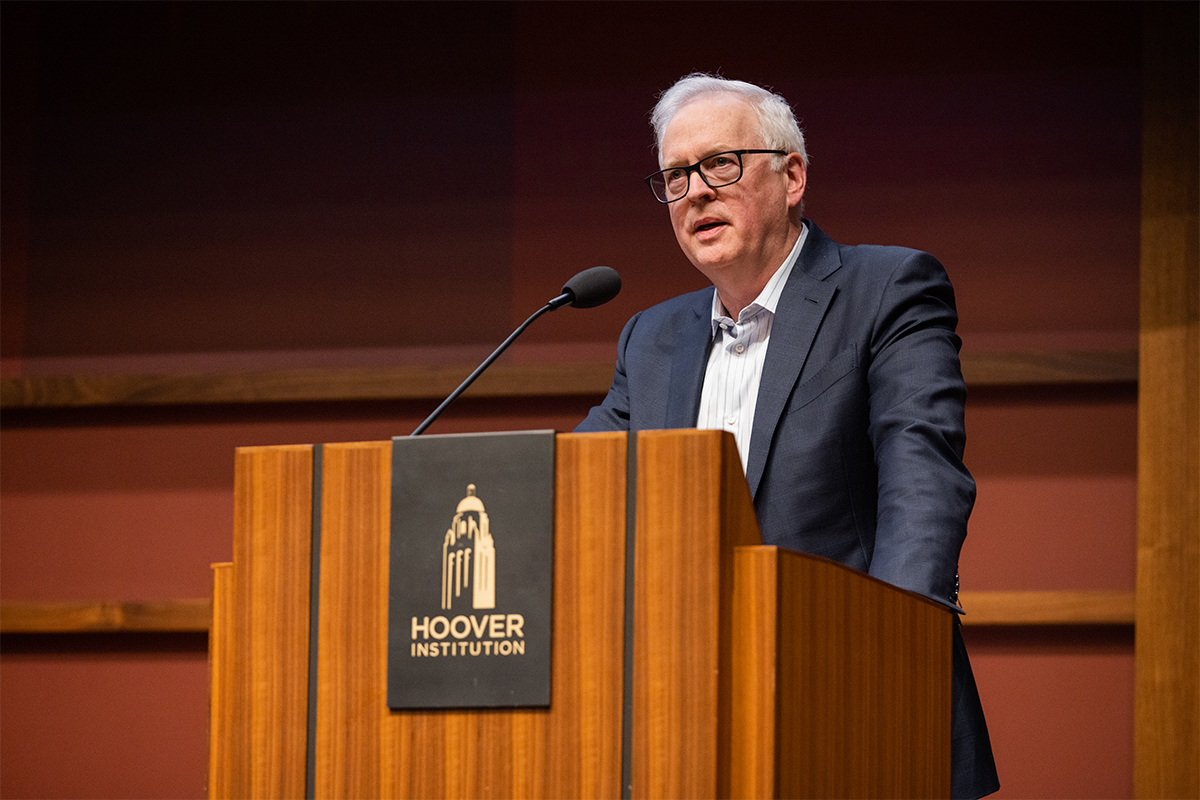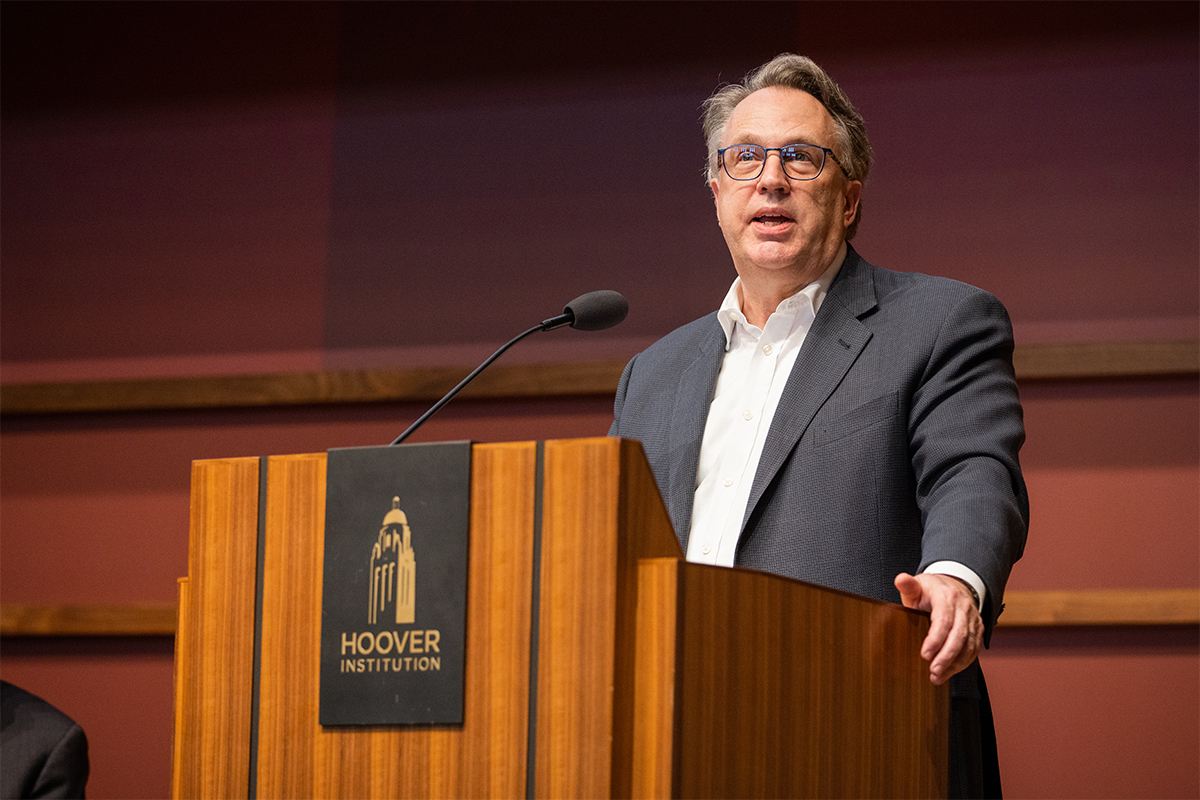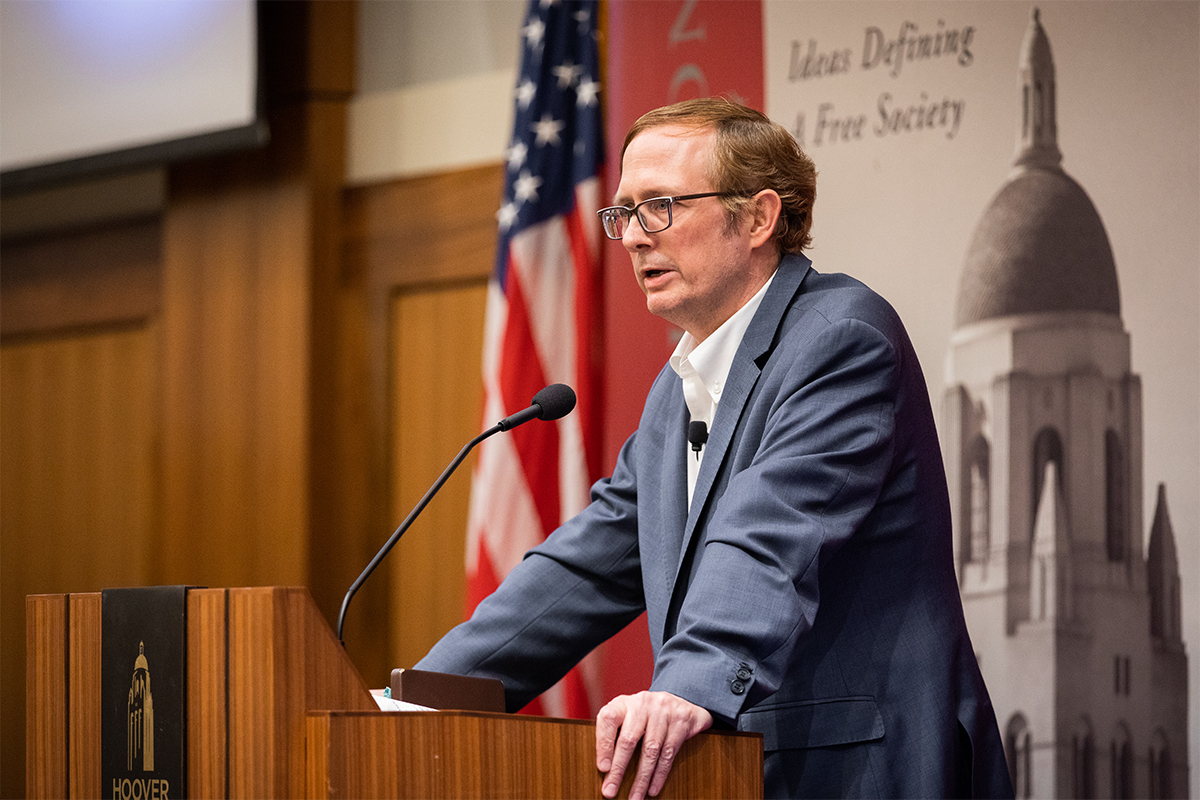Hoover Institution (Stanford, CA) — Economists and central bankers from across the globe gathered May 2‒3 for the Hoover Institution’s sixteenth annual monetary policy conference, discussing continued challenges in curbing inflation while ensuring stable economic growth, new forms of global payment systems, and financial regulations.
In all, more than twenty economists and regulators spoke and presented findings on topics ranging from how work-from-home arrangements have affected productivity and wage growth to novel ways for central banks to address a crisis.
Pulling Apart the Causes of Inflation
Scholars also addressed challenges discussed at previous conferences. Central banks across the globe were slow to spot and react to rising inflation in 2021, instead communicating it as a transitory problem. How should they improve performance going forward?
“Supply chain issues should not be a ‘dog ate my homework’ excuse for inflation that we don’t actually have to do anything about,” said Hoover senior fellow John Cochrane, a cochair of the conference along with colleagues John Taylor and Michael Bordo.
Taylor told attendees that the Federal Reserve in 2021 deviated too far from monetary policy rules (such as the rule he devised, the “Taylor Rule”), holding the key interest rate too low for too long, allowing inflation to rise.
During the conference, experts added new insights to understand the economic conditions of 2021‒22, including reasons for disinflation that did not involve a Fed-induced recession.
For Hoover senior fellow Steven Davis, the rise of work-from-home arrangements could be seen as a factor causing inflation to decline. He presented research that suggests some firms offered remote and hybrid working options as a way of tempering wage demands from their workers.
“Thirty-eight percent of firms (surveyed) in 2022 said they expanded work from home to moderate wage growth pressures,” Davis said. “Of those that expanded work from home, aggregate wage growth moderation across those firms was 2 percent in 2022.”
He presented other survey research that suggests the average value of working from home for white-collar workers was equivalent to 8 percent of their gross pay.
He also showed that across all sectors, real wages were down 0.2 percent between the first quarter of 2021 and the first quarter of 2024.
Monetary Policy and the Rest of the World
High interest rates combined with the strategic competition between the United States and China, along with the effects of the Russia-Ukraine war, are generating their own risks outside of inflation for global trade.
In his presentation, Yuriy Gorodnichenko of the University of California‒Berkeley displayed an ominous chart comparing total trade between Cold War blocs during the twentieth century to total trade among American, Russian, and Chinese-led blocs today. For the first time since the start of the Cold War, total trade among them is not increasing.
“Trade patterns between blocs are flat for the first time since 1930 or 1949,” he said. “You can decide for yourself if it’s 1930 or 1949, but this is still not a good development.”
Regarding Europe, Gorodnichenko pointed out the “Korea Discount,” whereby South Korean stocks are underpriced by the market due to the geopolitical risk posed by its “crazy” neighbor, North Korea. He said a similar discount might emerge in European equities based on the warring behavior of the neighboring Russian Federation.
The Role of the Regulator
At lunch, US Securities and Exchange commissioner Hester Peirce spoke of what she felt was regulatory overreach at the SEC in recent years.
“(The SEC’s) been on a mission to classify just about anything as a security,” she said.
“We charged the creators of Stoner Cats, a web series, with violations. We charged them with selling digital cats as part of an effort to create buzz for a series. We said that was a securities offering,” Peirce said.
She compared this episode with events of the past: “If we had taken that same approach back in the 1970s, Star Wars collectibles would have also been securities.”
Conference attendees also heard about the recent Bank of England actions to rescue over-leveraged pension funds from Carolyn Wilkins, a former Bank of Canada deputy governor who sits on the financial policy committee of the Bank of England.
In the fall of 2022, she explained, the interest rates on British government bonds started to rise dramatically. This forced defined benefit pension plans in the United Kingdom to try to raise cash quickly to meet collateral obligations.
One of the first casualties in this scenario, Wilkins noted, were liability-driven investing (LDI) funds, held primarily by pension funds, which borrowed money to invest in long-term bonds. As interest and British treasury note rates spiked, LDIs could not respond quickly enough, and some of them approached zero or negative value.
“Mortgages were cancelled or not even issued because of this disruption,” Wilkins said.
Wilkins explained that the Bank of England chose to intervene, buying the LDI assets, holding onto them for a matter of months, and then selling them back into the marketplace after January 2023.
She reflected that this experience taught her that financial products need to go through extreme stress tests, which “need to include hypothetical scenarios that have never happened before.”
The Vulnerability of Banks
Hoover senior fellow Amit Seru presented research that expanded upon his recent work on the vulnerability of banks. He argued that financial stability puts important constraints on monetary policy that central banks can otherwise follow.
He showed that US banks held more than $9 trillion in uninsured deposits at the beginning of 2022, something that would prove fatal in 2023 for Silicon Valley Bank and several others. The uninsured depositors have incentives to monitor the health of the bank and “will run at the drop of a hat,” he said. They are the source of potential solvency runs in many banks.
Looking at this picture, Seru said that federal regulators and supervisors may have too much discretion in how they assess risks at various banks under their supervision. This could be detrimental and make regulatory response sluggish, especially when there are fragmented responsibilities across many state and federal regulators. He added that the turmoil and continued vulnerability in the banking system suggest that the Dodd-Frank Wall Street Reform and Consumer Protection Act has not made the banking sector more stable.
He showed that non-bank financial institutions are now doing significant lending and banking activity in many markets. They do not benefit from government guarantees and rely on uninsured runnable debt. They incorporate the instability in their funding structure by voluntarily choosing much higher equity capital ratios.
Seru said that the normal policy response to this situation would be to raise banks’ capitalization requirements. He noted that banks have lobbied and effectively stymied such reform.
Trends Occurring Abroad
Attendees at the conference also heard from subject matter experts studying macroeconomic trends in specific countries.
Stanford economist Zhiguo He showed that China is facing the opposite of high inflation and rising interest rates.
“There is actually deflation in their economy,” he told the audience.
He pointed out that the People’s Bank of China is politically controlled, one of twenty-six entities that report to its State Council. That means changes to the key overnight lending rate in China require explicit political approval.
As such, the People’s Bank often uses other credit measures instead of adjustments to the key overnight lending rate to adjust macroeconomic policy. But overall, the interest rate is on a downward trajectory in China, moving from 4.2 percent in 2018 to 3.5 percent today.
Several presenters also discussed Latin America, especially Argentina.
Emilio Ocampo, a professor at UCEMA in Buenos Aires and advisor to recently inaugurated Argentine president Javier Milei, spoke about what he called Argentina’s two main problems: “time inconsistency” and “institutional anomie.”
Regarding the problem of “time inconsistency,” Ocampo said policymakers in Buenos Aires always take a short-term approach to fiscal and monetary policy.
As a result, across the globe only Angola and Venezuela had more years in the past twenty-five when the economy shrank.
Compounding this reality, Ocampo argued that the Argentine executive branch suffers from “institutional anomie,” meaning it doesn’t follow its own laws.
“It’s impossible to have effective local commitment to anything,” he said. “This comes from having endemic populism.”
As a result, Ocampo said Argentina “has no international credibility.”
“Basically, everyone in the market thinks [the government] will back down and reverse any reforms eventually.”
Moving to a different crisis that affected the security and also the macroeconomic stability of Israel, Amir Yaron, governor of the Central Bank of Israel, gave an informative presentation on actions his central bank took in the chaos following the October 7, 2023, attack by Hamas and the subsequent war. He also discussed how small open economies adapt monetary policy rules to consider and respond to exchange rate fluctuations.
Openness and Transparency at the Fed
Believing the US Federal Reserve has credibility issues of its own, Harvard professor and former US Treasury secretary Larry Summers said central bankers need to become less specific in their forecasts given the uncertain nature of markets today.
“We have a stunning amount of uncertainty,” he said, “And what do you do when you have a stunning amount of uncertainty? You avoid making specific forecasts, you avoid sticking to specific rules.”
He reflected on his time advising President Obama as director of the National Economic Council and said central banks expressing a desired inflation rate publicly ties their hands from making adjustments to policy when macroeconomic conditions start to change.
“If you announced a target, you’d either be constrained by that target or you’d be sacrificing your credibility. If you were really trying to make monetary policy right, you’d have a radical change from the approach (the Federal Reserve) is taking.”
Meanwhile, Federal Reserve Bank of Chicago chair Austan Goolsbee, also an Obama-era advisor, said the fact the bank’s deliberations and pronouncements are made public is a good thing.
“In my view, in the twenty-first century the (Federal Open Market Committee) is the world’s greatest deliberative body,” Goolsbee said. “Having folks with different world views makes for better decision making. There’s nothing wrong with the public knowing these views. It’s reality.”
Speaking about how central banks have evolved over the years, Federal Reserve Bank of New York chair John Williams gave an overview of how central banks have evolved, focusing on rules, transparency, and attention to expectations and thus the central bank’s commitment to eventually reach its inflation target, even if there are bumps along the way.
At dinner, Edward Nelson, a senior economist with the Board of Governors of the Federal Reserve System, cited his book on Milton Friedman, giving a history of how Friedman and other commentators approached the inflation of the late 1970s, a period which is in some ways eerily similar to the current moment. Nelson said Friedman saw inflation coming, which many others did not, and of course argued for better monetary policy to contain it.







